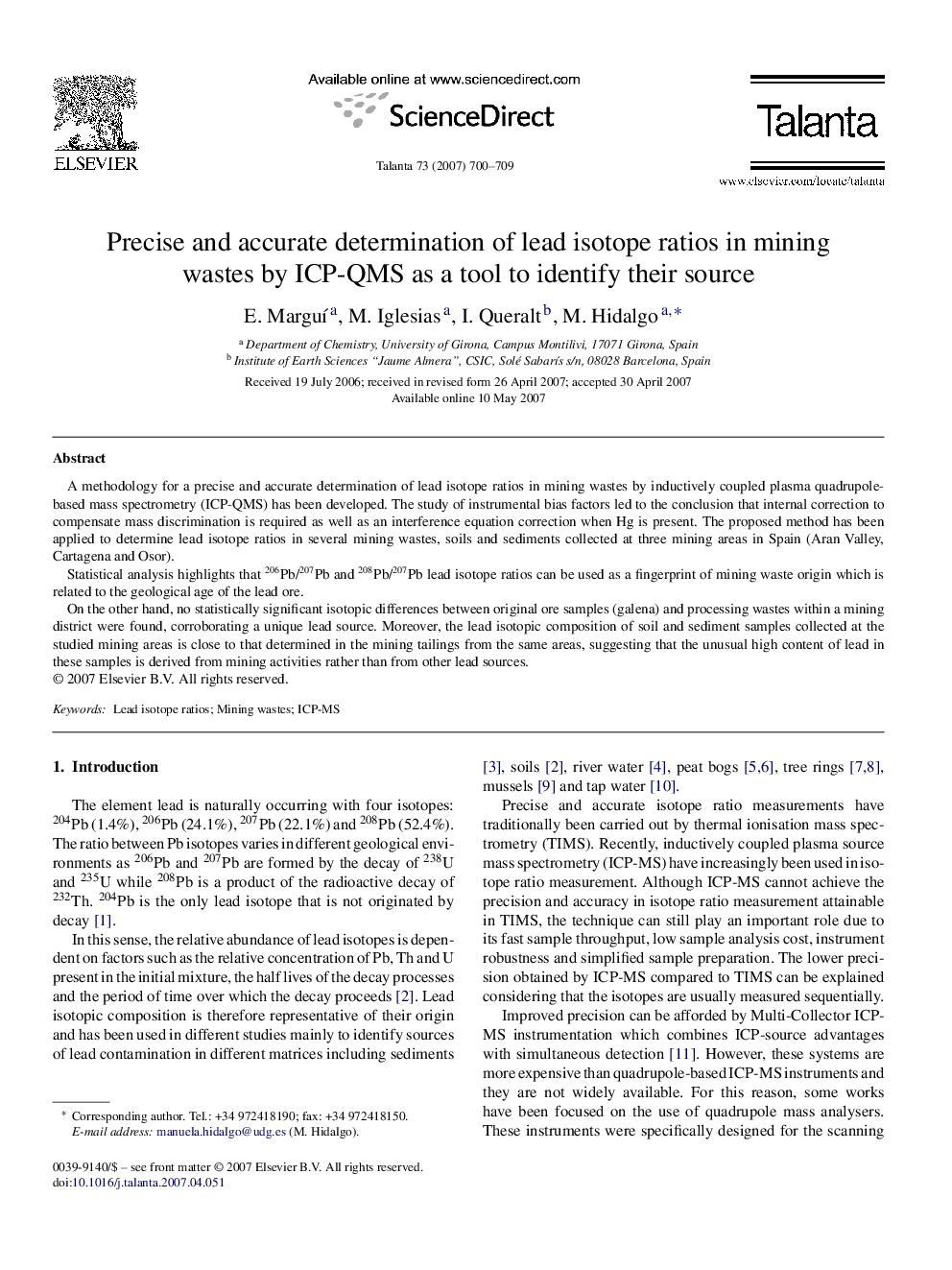| Article ID | Journal | Published Year | Pages | File Type |
|---|---|---|---|---|
| 1247181 | Talanta | 2007 | 10 Pages |
A methodology for a precise and accurate determination of lead isotope ratios in mining wastes by inductively coupled plasma quadrupole-based mass spectrometry (ICP-QMS) has been developed. The study of instrumental bias factors led to the conclusion that internal correction to compensate mass discrimination is required as well as an interference equation correction when Hg is present. The proposed method has been applied to determine lead isotope ratios in several mining wastes, soils and sediments collected at three mining areas in Spain (Aran Valley, Cartagena and Osor).Statistical analysis highlights that 206Pb/207Pb and 208Pb/207Pb lead isotope ratios can be used as a fingerprint of mining waste origin which is related to the geological age of the lead ore.On the other hand, no statistically significant isotopic differences between original ore samples (galena) and processing wastes within a mining district were found, corroborating a unique lead source. Moreover, the lead isotopic composition of soil and sediment samples collected at the studied mining areas is close to that determined in the mining tailings from the same areas, suggesting that the unusual high content of lead in these samples is derived from mining activities rather than from other lead sources.
